Nationality German | ||
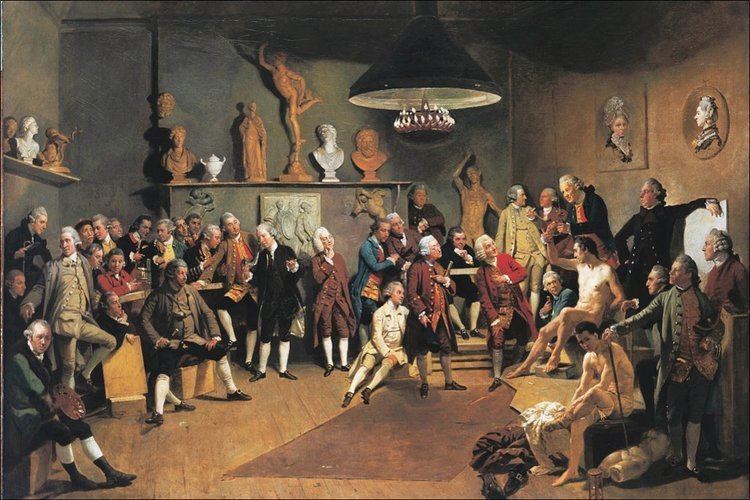 | ||
Full Name Johannes Josephus Zaufallij Artwork Tribuna of the Uffizi, Colonel Mordaunt's Cock Mat, The Death of Captain James C, Charles Townley in his Sculpt, ʻAhu ʻula Similar Francis Hayman, Thomas Daniell, George Willison, Christopher Wren, Inigo Jones | ||
Johan Joseph Zoffany, RA (born Johannes Josephus Zaufallij, 13 March 1733 – 11 November 1810) was a German neoclassical painter, active mainly in England. His works appear in many prominent British National galleries such as the National Gallery, London, the Tate Gallery and in the Royal Collection. His name is sometimes spelled Zoffani or Zauffelij.
Contents
Biography
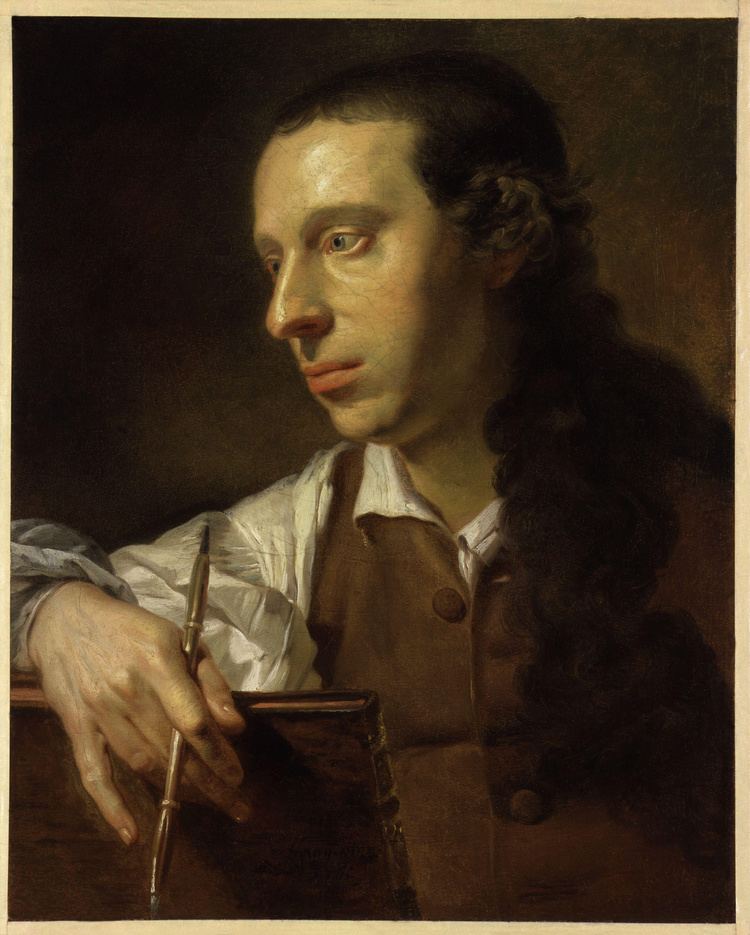
Of Bohemian origin, Johan Zoffany was born in Frankfurt on 13 March 1733. He undertook an initial period of study in a sculptor's workshop in Ellwangen in the 1740s (possibly at the workshop of sculptor Melchior Paulus) and later at Regensburg with the artist Martin Speer. In 1750, he travelled to Rome, entering the studio of Agostino Masucci. In autumn 1760 he arrived in England, initially finding work with the clockmaker Stephen Rimbault (Zoffany's fine portrait of whom is now in the Tate Gallery), painting vignettes for his clocks. By 1764 he was enjoying the patronage of the royal family, King George III and Queen Charlotte, for his charmingly informal scenes such as Queen Charlotte and Her Two Eldest Children (1765), in which the queen is shown at her toilette, with her eldest children, inside Buckingham House, and another, outdoors, with her children and her brothers. He also was popular with the Austrian Imperial family and in 1776 was created "Baron" by the Empress Maria Theresa.
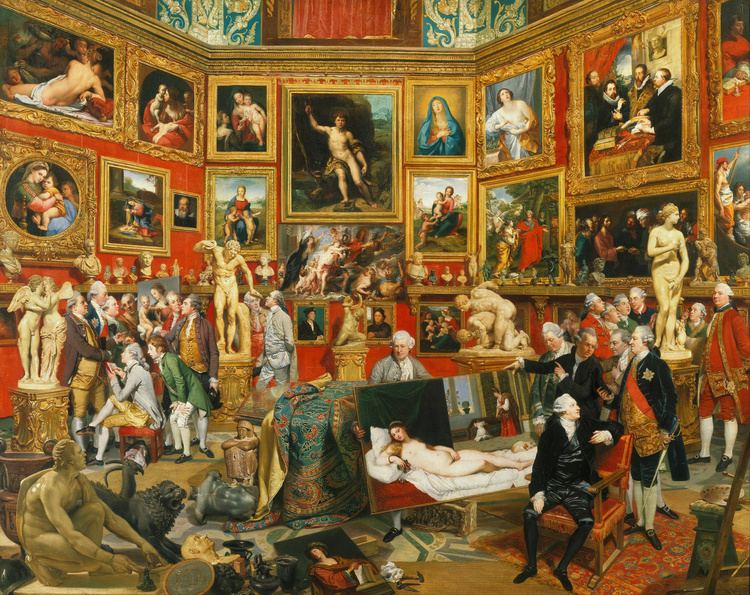
Johan Zoffany was a Freemason and was initiated into the Craft on 19 December 1763 at The Old King's Lodge No 28.
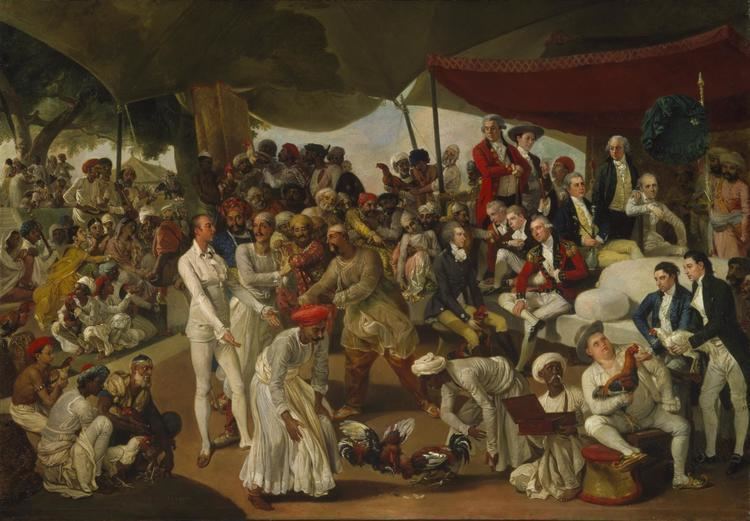
A founding member of the new Royal Academy in 1768, Zoffany enjoyed great popularity for his society and theatrical portraits, painting many prominent actors and actresses, in particular David Garrick, the most famous actor of his day – Garrick as Hamlet and Garrick as King Lear – often in costume. He was a master of what has been called the "theatrical conversation piece", a sub-set of the "conversation piece" genre that arose with the middle classes in the 18th century. (The conversation piece – or conversazione – was a relatively small, though not necessarily inexpensive, informal group portrait, often of a family group or a circle of friends. This genre developed in the Netherlands and France and became popular in Britain from about 1720.) Zoffany has been described by one critic as "the real creator and master of this genre".
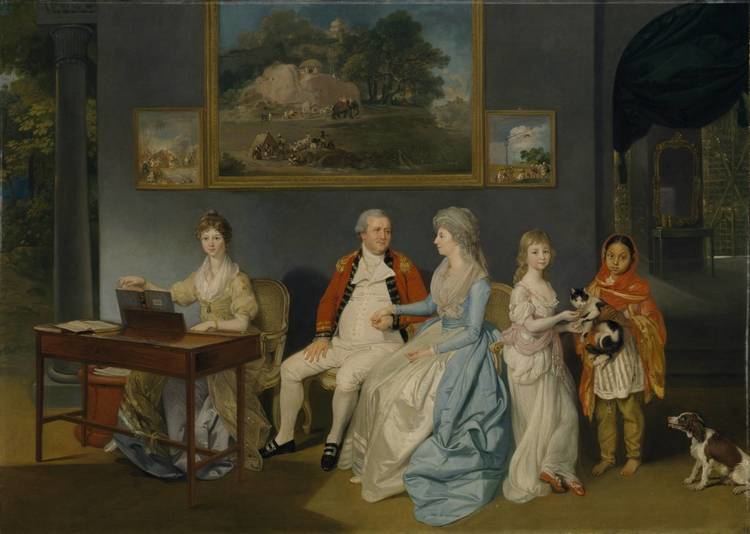
In the later part of his life, Zoffany was especially known for producing huge paintings with large casts of people and works of art, all readily recognizable by their contemporaries. In paintings like The Tribuna of the Uffizi he carried this fidelity to an extreme degree: the Tribuna was already displayed in the typically cluttered 18th-century manner (i.e. with many objects hanging in a small area, stacked many paintings high on the wall), but Zoffany added to the sense of clutter by having other works brought into the small octagonal gallery space from other parts of the Uffizi.
Though Zoffany made several visits to continental Europe and India in his lifetime, he remained in Britain, dying at his home at Strand-on-the-Green on 11 November 1810. He is buried in the churchyard of St Anne's Church, Kew. The painter Thomas Gainsborough was, by that artist's own request, later buried nearby.
In literature and media
In the comic opera The Pirates of Penzance, by Gilbert and Sullivan, the Major-General brags of being able to distinguish works by Raphael from works by Gerard Dou and Zoffany.
Zoffany lived in Lucknow for a time; during his return to England, he was shipwrecked off the Andaman Islands. The survivors held a lottery in which the loser (a sailor) was eaten. William Dalrymple thus describes Zoffany as having been "the first and last Royal Academician to have become a cannibal".
Despite the high profile the artist enjoyed in his day, as court painter in London and Vienna, Zoffany has, until very recently, been curiously overlooked by art historical literature. In 1920 Lady Victoria Manners and Dr. G. C. Williamson published John Zoffany, R. A., his life and works. 1735–1810 – the first in-depth study of the artist and his work, privately printed, presumably at some cost (with 330pp, numerous black/white and a few colour plates), in a limited edition of 500 copies.
In 1966 Oliver Millar published Zoffany and his Tribuna – the expanded and illustrated notes of a lecture given at the Courtauld in 1964, on Zoffany's celebrated Uffizi group-portrait now in the Royal Collection. (London: Paul Mellon Foundation for British Art: Routledge & Kegan Paul, 1966.)
This was followed by Johan Zoffany, 1733–1810, Mary Webster's short but authoritative illustrated guide for the exhibition at the National Portrait Gallery, London (14 January to 27 March 1977). In December 2009, the first full biography was published, Johan Zoffany: Artist and Adventurer by Penelope Treadwell (Paul Holberton Publishing).
This biography traces Zoffany's footsteps, from his youth in Germany, through his first years in London – working for clockmaker Stephen Rimbault – to his growing success as society and theatrical portraitist and founder-member of the Royal Academy, and following him on his Grand Tour and sojourn in India. Illustrated in full colour with more than 250 works by Zoffany and his peers, many of which are in private collections, Treadwell's biography provides a timely reassessment of the artist's life and work.
In 2011 Mary Webster published her long-awaited monograph on the artist: Johan Zoffany 1733–1810 (Yale University Press). In 2011–12 the Yale Center for British Art and the Royal Academy, London, showed an exhibition Johan Zoffany, RA: Society Observed, curated by Martin Postle, with Gillian Forrester and MaryAnne Stevens, with a catalogue of the same name.
A 2014 book by David Wilson describes Zoffany’s relationship with Robert Sayer (1725–94). A leading publisher and seller of prints, maps and maritime charts in Georgian Britain, based in Fleet Street, London, Sayer organised the engraving of paintings by some leading artists of the day, most importantly Zoffany, and sold prints from the engravings. In this way he helped to secure Zoffany’s international reputation. Sayer and the artist became longstanding friends as well as business associates. In 1781 Zoffany painted Robert Sayer in an important ‘conversation piece’. The Sayer Family of Richmond depicts Robert Sayer, his son, James, from his first marriage, and his second wife, Alice Longfield (née Tilson). Behind the family group is the substantial villa on Richmond Hill overlooking the River Thames, built for Sayer between 1777 and 1780 to the designs of William Eves, a little known architect and property developer. On Sayer’s death in 1794 the house was to become the residence of a future king of Great Britain.
